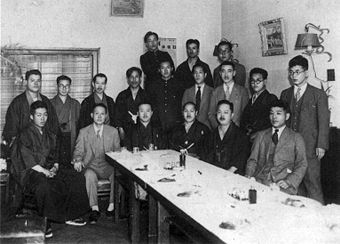History of T.K.U Karate
This art of self-defense makes use of no weapons, only bare feet and empty hands, Karate-ka aim not only towards perfecting their chosen art but also towards emptying their heart and mind of all earthly desires and vanity.
Karate is a martial art, developed in Loochoo (the old name of Okinawan Islands) since the ancient times. The inhabitants of these islands had peculiar bare hand striking and bare feet kicking techniques, which constituted special features of karate. They called their martial art 'Tei' which means hand.
During the Tang dynasty of China, a special method of Kempo (boxing) was introduced to the island together with the culture of the dynasty. This contributed so much to the development of the native way of boxing. The inhabitants named this superior foreign way of fighting 'To-dei' which literally means 'Tang Hand'.
In 1406, the King of UH Loochoo Islands proclaimed the establishment of a peaceful country and forbade inhabitants to hold or carry weapons. This probation is said to have made 'To-dei' more popular although some warriors were allowed to rearm themselves later to protect their islands from possible invasion.
In 1609, Ryukyu (as Loochoo was subsequently renamed) was conquered by the Japanese Shimazu Daimyo of Satsuma and made a dominion of the clan. The conquerors confiscated all the weapons of the Ryukyuans in order to rule the Islands with greater ease and prohibited the practice of martial arts. The Ryukyuan warriors (most of whom were members of the Shizoku = Samurai class) fought against the soldiers of the Shimazu clan and were renowned for their bravery and fighting skills. This prohibition led to them practicing the art of weaponless defense To-dei clandestinely.
This art of Okinawan unarmed combat was introduced to the public of Japan proper for the first time in the spring of 1922, as Okinawa Kempo of To-dei or Ryukyu Karate Jutsu. Japanese Martial Arts master Mr. Hironori Ohtsuka studied the Karate-Jutsu with great interest and later combined the art with techniques from an ancient form of Japanese unarmed combat, Jujitsu, to produce an advanced fighting art Wado-Ryu Karate-Do in 1934.
Wado-Ryu Karate-Do is now one of the most popular styles of Karate in the world (Wado means 'the way of peace and harmony', Karate-Do means 'the way of the empty hand' meaning without weapons).








